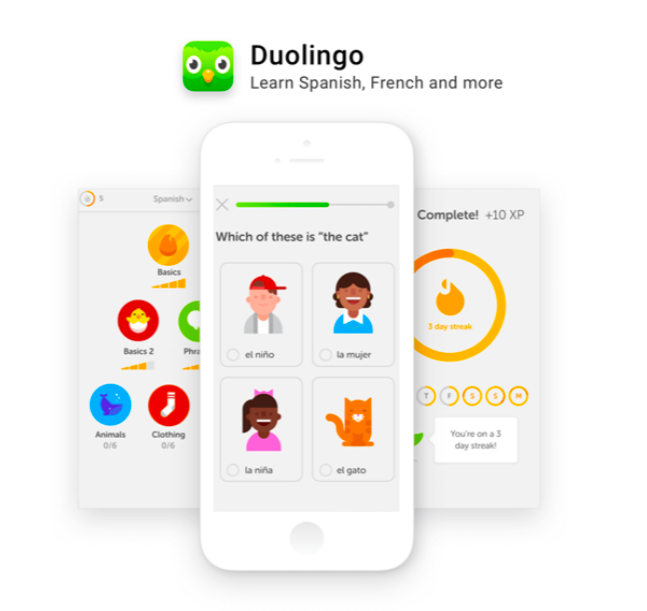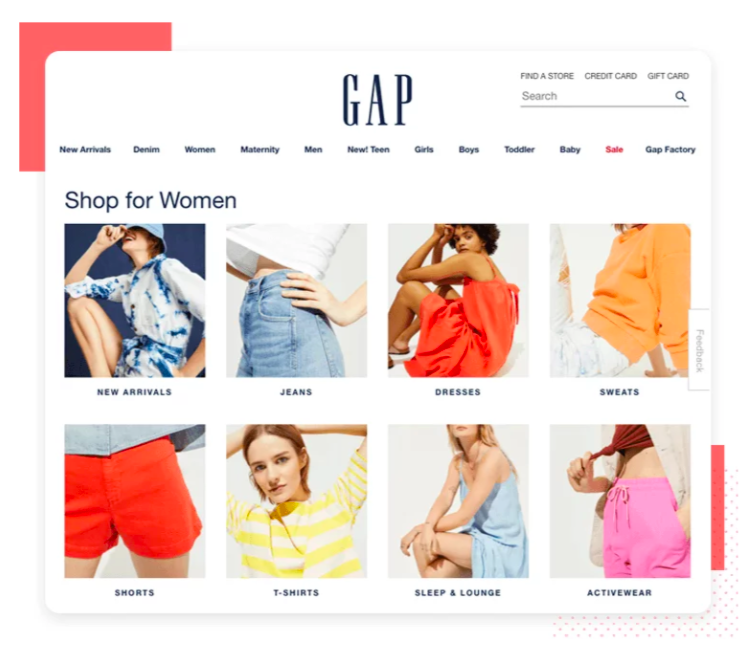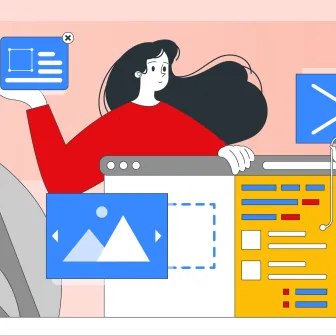Before buying any product, we always look at its pros and cons for future use. Sometimes we like a product but are not able to decide whether it would work for us. Suppose you want to buy a chair that is designed perfectly but is not able to hold your weight and fails to satisfy you. That will make you less interested in the product itself. It would have been better if the makers of that chair had already tested the weight capacity before.
Similarly, if you are in the design team and creating a product for your buyers, in that case, it becomes essential to understand how people will perceive it. Because without having this understanding, you can never win a user’s heart. And here comes the User Centered Design (UCD) in play. Companies primarily practice a user-centered design approach to make more user-centric products.
Jesse James Garrett, in his book “The Elements of User Experience: User-Centered Design for the Web and Beyond”, explained user experience is not about the inner workings of a product or service. Its primary objective is to work for an outside environment where a person comes into contact with it. When someone asks you what it’s like to use a product or service, they’re asking about the user experience. How smooth and convenient that product is while using. All this comes under UCD system.
Let us understand UCD in detail further.
What is User-Centered Design System

User-centered design system is an approach to produce or design the product in a way that fulfills the user’s needs by involving the user in the design process. It is an iterative design process in which designers focus on the users and their needs in each phase of the design process. While designing a new product, it becomes important to understand what you're designing and for whom you are designing. In product designing, your primary focus should not be only on designing for people but to design for the right audience. And that is what UCD is, it is all about a tailored experience for users.
It basically works on the principle of generating a smooth and trouble-free user experience. This experience is incorporated with the flow of information you get for your users and their needs by finally putting it all together to produce a product to meet business goals.
Here are some examples of good user-centered designs. Everything looks easy to understand and works exactly the way it should. The interface design of these apps is exclusive and gives the best navigation to users.


Key principles for UCD system

We have got a basic idea of what UCD is, now let's understand how it functions and what are the major components of UCD. To start with any new product, what matters the most? Answer is very simple, the target user matters the most for whom we are designing. Remember one thing that a user-centered design system is all about tailored a product for the user, which involves the user’s active participation from the beginning. The closer you get to the user, the more you understand their pain points and feedback, the more likely they are to love your product.
Once you involve the user, it is important to understand whether you are on track or not. Measurements and testing of your product become crucial at that point in time because nobody wants to create any bad product for users. And at the end, follow the iterative design process and allow for the complete overhaul and rethinking of design by early testing of conceptual models and design ideas.
What benefits can UCD give you?

- Increase sales: UCD is one such method where you can involve your potential user at every phase of the design process which helps you to give a better understanding of requirements and expectations. Once you achieve those requirements and fulfill expectations you will deliver a better product which ultimately results in more and more sales.
- Reduce chances of human error: As the title suggests, when you involve your user in the iterative design process it will automatically help you reduce human error and allow you to create a trouble-free product.
- Leads to more inclusive products: UCD helps you to leave all the biases out of the product and focus on all different types of users whether in terms of age, culture, occupations and so on.
- Stronger sense of empathy: Because the design team is in closer contact with users, they develop not only a deeper understanding but also a stronger sense of empathy towards them.
- User-centered design help UI/UX designers: You spend less time prototyping when you know what targeted users want from design. UCD helps designers to understand user’s pain points and bespoke requirements just by testing and measuring key demographics. Also, by getting instant feedback.
How does the UCD process work?
User-centric process is nothing less than creative writing where first you have to understand the intent of the reader and then start writing. Similarly, to design in a user-centric way identify the potential user who will use your product, what they’ll use it for and the conditions under which they will use it. Observe people’s lives, hear their hopes and needs, and get smart about your challenge.

User research
First and foremost step to start with UCD is to research your user. Find out the type of user who will be using your product, what issues they can face while using your product. Research about their emotional and psychological needs as well. The ultimate goal is to understand who we are designing for.
User requirements
This will include the user as well as your business requirements of the company. Ask before initiating the design why this design is beneficial for both business and user. To understand user requirements one has to draw the idea in his/her mind. This can be achieved by storyboarding which helps us to analyze how a user interacts with a product and allows designers to see a product from a user’s point of view.
Set out design and solutions
Once you analyse your user’s needs and requirements then you can easily move forward to set out design solutions for them. This stage includes site mapping, preparing a layout with mockups including icons, colors, themes, and images.
Analyze
Now you are done with some of the major parts of designing and it is time to analyse whether you are going in the right direction or not. Whether your product meets all of the goals. Ask yourself where you struggle the most or where you can improve the product. These questions need to be answered to proceed with the final steps.
Test your design
It is time to bring your design to life and implement it in the market. You might have to look back for several rounds before it all gets done. What’s important is that you come up with a product that will meet your users’ needs and your goals. When you are set to deliver your product to the market make sure that you will evaluate or assess its impact. This will give you a more clear understanding to market that product to potential users.
What to know before applying user-centered design approaches
This section will give you clarity on some key points to remember before initiating the UCD process. It is all about turning empathy concepts into product requirements which means product designers should be able to understand users’ thoughts, feelings, and appeals while designing a product. For better understanding try to involve each and every team member because that will help in making more creative design decisions. A great team will assist in achieving goals at a faster rate and create a tremendous impact on the outcome. With team-building make sure that non-validating personal opinions on design will create a problem for producing a good product. Personal biases should be avoided from the very first level. Every product development is a journey. The product team makes a lot of decisions along the way, and the outcome is often defined by those decisions. If we prioritize user needs and wants, and truly strive to create a user-focused design, our journey will end up with a product that users will love.
UCD and Design thinking go hand in hand
Let’s understand how design thinking plays an important role with UCD approaches.
User-centered design and design thinking are the most frequent methods used by businesses, governments, design agencies, and social channels. Simply because they are correlated to each other. Let's try to understand how these methods work together in product designing.

Since both of the processes help to find solutions for users’ needs but user-centered design focuses on encouraging deep empathy with the users you are designing for and creating solutions with users’ needs and validation at the forefront of all designs. Whereas design thinking is more than product development where you take care of users’ needs but also figure out technological feasibility and business goals into consideration.
What makes them similar is their vision to achieve their respective goals. UCD as well as design thinking both have the ability to feel their users and understand their behaviors with empathy. The crux of the process is to empathize with your users and ultimately determine the outcome of your design. They view problems as opportunities for enhancement. Problem-solving is something that connects them as a process because, in the end, the main idea is to overcome all the hurdles. And the problem can be solved with an enthusiastic team them design method works best when a team of enthusiastic
Agile methodology coalesces with UCD
Agile approach to software development has gained a lot of attention. And user-centered design fits very well with Agile. With their collaborative customer focus and iterative, test-driven approach, they are gaining acceptance in organizations as an efficient and effective way to develop software products that make a difference.
Here you will see some advantages brought about by the incorporation of user-centered design with an Agile methodology:

UCD incorporation with Agile methodology is a key to successful innovations. Just like UCD, agile also focus on users’ needs by providing value through ensuring a useful, usable, and engaging product. Early delivery of working software helps in reducing project risk via continuous feedback and enables the early realization of business growth and benefits. With iterative development, another important thing is to perform user testing to ensure that you are working on the right thing. This testing also involves maintaining transparency with all the stakeholders. After testing three major areas to look after are cost reduction, higher customer satisfaction, and increased productivity. These three correlate with each other in terms of monetary ideas. Cost can be reduced because users can understand the product without help. This results in higher customer satisfaction. When you will know every tit and bit of the process you can easily remove the unwanted information or process which disturbs your sales.
Learn more about the topic here:
- Building user trust in UX design
- Designing for sustaining attention
- Getting familiar with cross cultural design
- Design considerations for accessibility
- Ethical design
- Humour in web design
- How diverse design teams encourage innovation
- Cognitive accessibility in web design
- Complete guide to web design
End note
So, after knowing every bit of information on UCD you can figure out whether you want to follow a user-centered design approach or not. Think carefully about how the potential user feels, put yourself in their shoes, and listen to them. It is important to understand the product requirement because, if we prioritize user needs and wants, and truly strive to create a user-focused design, your journey will end up with a product that users will love.
Subscribe
Related Blogs
UX Best Practices for Website Integrations

Website Integrations determine whether users stay engaged or abandon a site. I experienced this firsthand with a delivery…
How design thinking acts as a problem solving strategy?

The concept of design thinking is gaining popularity these days since people across different industries are using it as a…
10 major challenges that come across during an agile transformation

It’s no longer a mystery that agile was created as a response to the various concerns that the traditional waterfall…




